XEREMIA's instruments
Xeremia's instruments are reconstitutions of early instruments.
HURDY-GURDY
Initially called Organistrum and later Symphony, the instrument was
used
to accompany the singing of church-singers at the end of the XI
century. It was composed of a sound-bax or boby fitted with a wheel
itself turned by means of a handle. Around this wheel which constitutes
a
circular bow a number of strings are made to sound when they are
pressed against the wheel in motion. A few keys press down the highest
strings making it possible to play a melody while other strings which
remain free produce one or several uninterrupted sounds called drone.

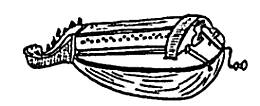
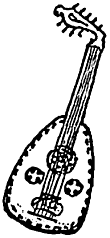
LUTE
Known
in Eastern countries under the name OUD (Al oud means
wood), it became widely practised in Europe since XIIIth c.. A
sound-box fitted with a neck is generally equiped with eleven strings.
Only melodies can be played on it. During the Renaissance period,
frets appeared on the neck thus enabling the player to play an
accompaniment too.
CITOLE
From Spain, XII c., it's an early guitar with five single or double strings.
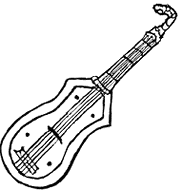

RECORDER
In the Middle-Ages recorders were generally made of elder tree sticks, bones etc . They come in all sizes. Extremely light, they are suited to all sorts of repertoires.
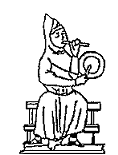
TABOR PIPE or 3 HOLE PIPE
It is a three-holed flute with a shriller sound than the recorder. The notes are produced owing to the right combination of fingering and air pressure to obtain harmonics or sounds naturally produced through resonance.

PSALTERY
The instrument dates back to the VII century in Persia. The styles and ways of playing it differ widely. A number of string (made of gut, silk or metal) are stretched over a soundboard and they can be plucked or struck.

ROMAN FIDDLE
Carved in a block of wood recorvered with a thin soundboard, it is generally fitted with two or three strings. Played with a bow it is widely used for dance music.
MEDIAEVAL FIDDLE
During the Middle-Ages the mediaeval-fiddle was the king of the string family of instruments. Contrary to the rebec, the mediaeval-fiddle its soundbox is made of several pieces of wood stuck together. The strings (usually four of them) are played in such a way as to produce a chord (Fourth or Fifth).
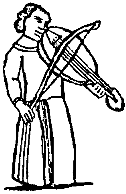
![]()
SHAWM
It is composed of a double reed located on top of the main body . It is mostly played outdoors. At the end of a long process of improvements it became the oboe.
RAUSCHPFEIFE
This early oboe, sometimes calls "oboe from Poitou", has been present on enluminures at the XIIth century. It use a double reed. Like the shawm, this instrument has been knew since antic.


CRUMHORN
This instrument of the shawm family became widely used at the end of the Middle-Ages. The double reed is concealed in a mouthpiece, which prevents the player from touching it with his lips. There is a whole family of them : soprano, alto, tenor, bass.
BAGPIPE
Like the shawm the bagpipe is fitted with a double reed. It is composed of a windbag into which the player blows a reserve of air, and on which he exercises a pressure with his arm so that a flow of air forced into the chanter which plays the melody and into the other (drone) pipes (single reed) who provide the drone.
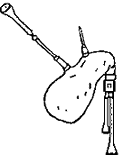
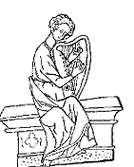
HARP
In the Middle-Ages it was easy to carry and thus widely used, then it came out of fashion at the beginning of the Renaissance period to gain ground again at the end of the XVIII century. The number of strings stretched between the crossbar and the arm which play the role of a soundbox varied greatly throughout the century.
ORGAN
It can be traced back to the III century B.C. In the Middle-Age their size was small. They comprise a small keyboard with a row of pipes on top. The air intake is produced by a small bellows frequently adjoining the organ. The bellows can either be worked by the player himself with one hand or by another person.
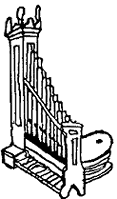
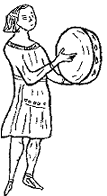
DRUMS
Drums refes to the whole set of instruments which are struck in order to produce a sound. Their function is to mark the rhythm of a song or dance. Such instruments are made to vibrate with fingers, hands, or sticks. They come in all shapes and are made of various materials : wood, hide, metal...
